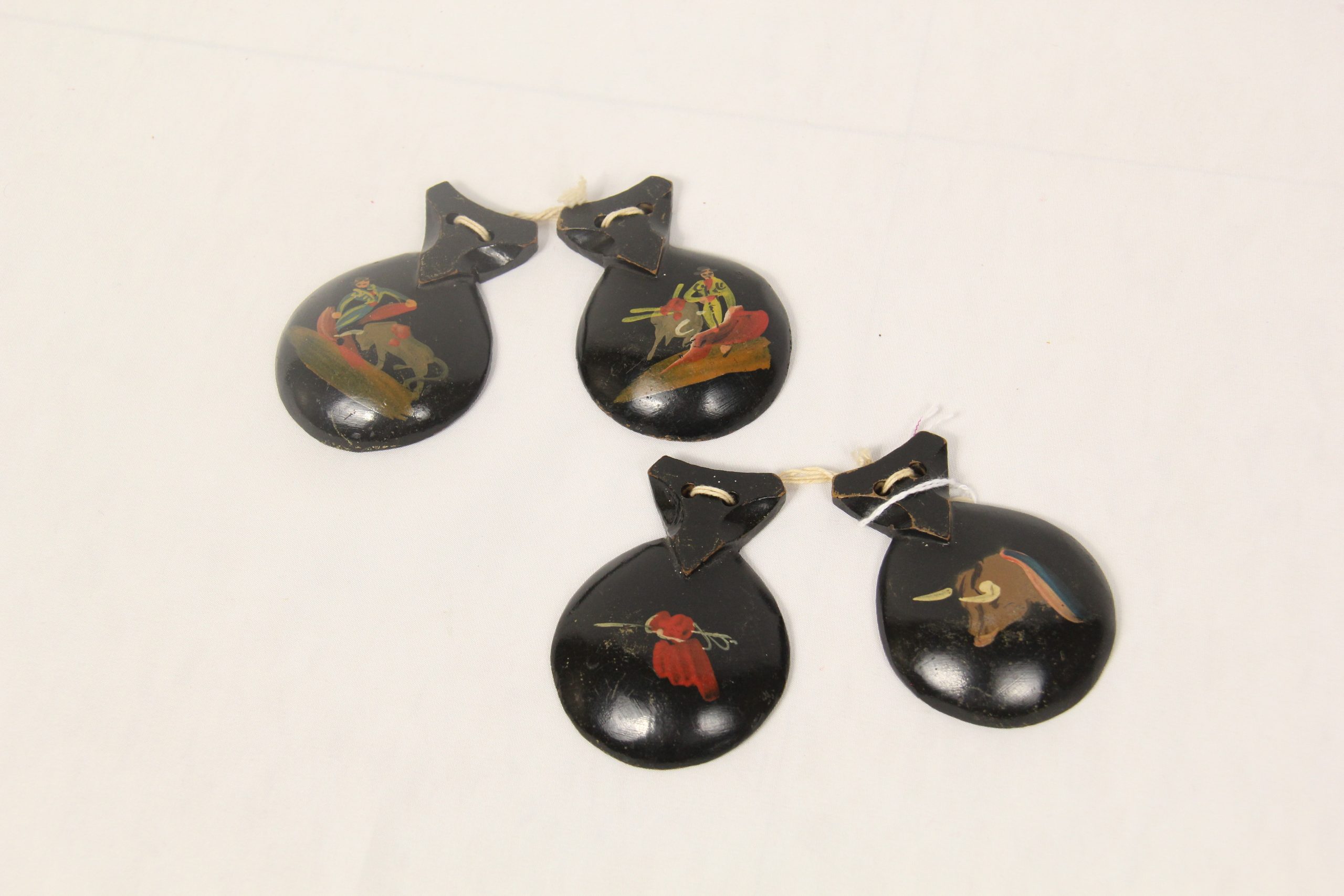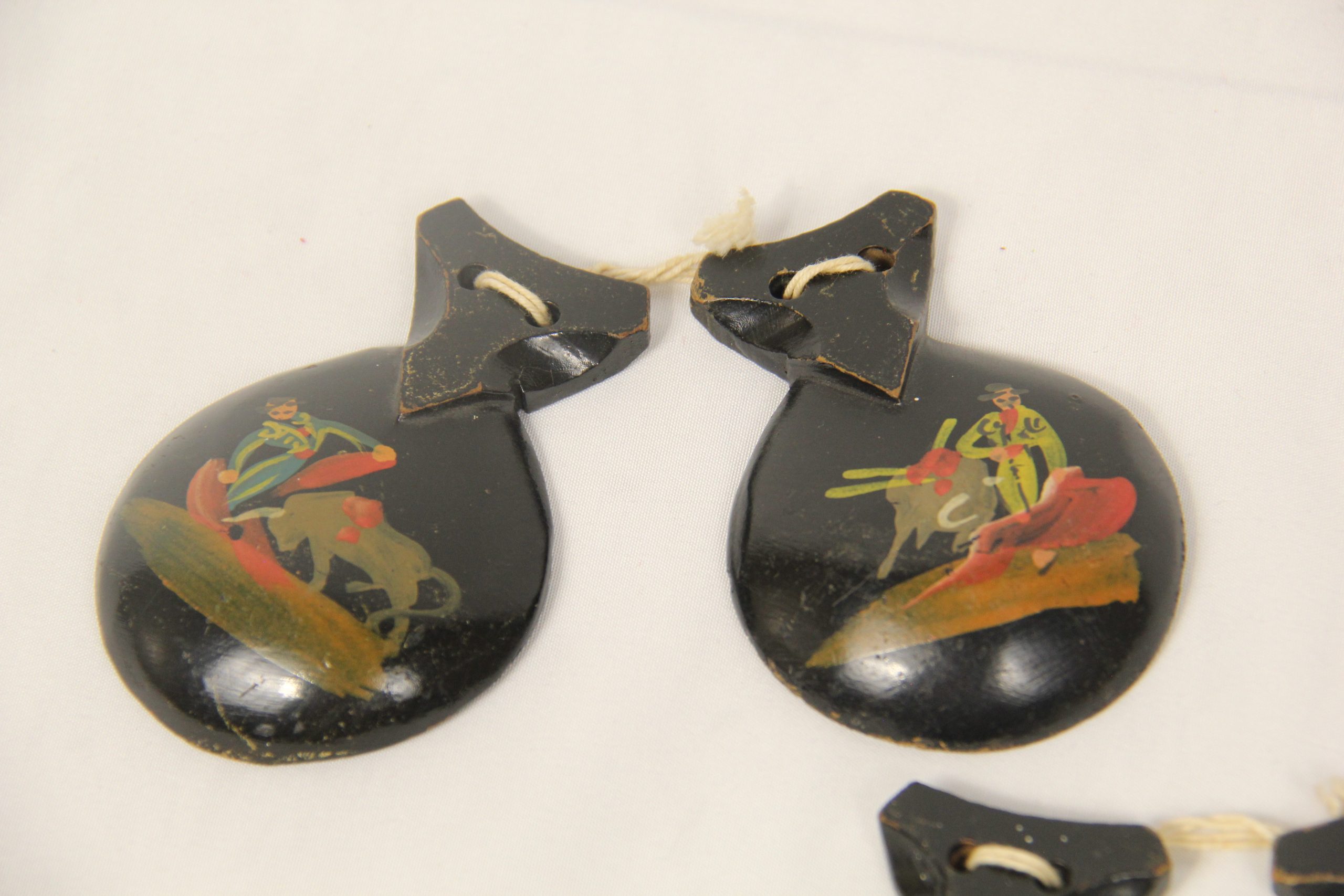Castanets
Details
- Origin: Spain
- Date: 20th-21st Century
- Collection: DHB 149 & DHB 150
Description
Each castanet consists of two “shells” bound together with string. The hollow interior of each shell is called the “sound box” and the lip where the pair of shells are tied up are called the “ears.” The outside is painted with designs.
Castanets may be the national instrument of Spain, but they were actually invented over 3000 years ago by the Phoenicians for religious ceremonies. After diffusing throughout the Mediterranean, they eventually found a niche in Spain during the Middle Ages due to heavy trade in the Iberian peninsula, and later on further diffused to Latin America. The castanets took firm root in Spain, however, and have become synonymous with the country’s culture.
The Spanish word for castanet is “castanuelas” which comes from the Spanish word “castana” meaning “chestnut” or “hazel,” which were the woods castanets were traditionally carved from. Traditionally, castanets are always played in pairs, the left-handed castanet being called the “macho,” being lower in pitch and considered masculine, while the right-handed one is called the “hembra” and is considered feminine as it is higher-pitched. Quality castanets are handcrafted for their players.
The link between castanets and flamenco dance has been ingrained in Spanish culture, changing over time to fit the needs of dancers and new rhythms, but always harkening back to Antonia Mercé y Luque, also known as “La Argentina.” Luque (1890-1936) was originally a ballerina before she decided to explore traditional Spanish dance, and she ultimately redefined the genre for generations to come, putting both Spanish folk dance and castanets in the spotlight. Ever since, anyone performing with the castanets has, in some way, tried to emulate her.
While this museum may have an example of castanets obtained from a tourist shop, it still carries the legacy of La Argentina and Spanish cultural music and dance.
Sources
de Vincente, Carmen. “Castanets.” Flamenco & Dances from Spain, 2021. https://carmendevicente.com/castanets.
“Flamenco Castanets, What Is the Origin of This Instrument?” El Palacio Andaluz. El Palacio Andaluz, November 26, 2018. https://elflamencoensevilla.com/en/flamenco-castanets/.
Romer, Megan. “Castanets: A Spanish Folkloric Percussion Instrument.” LiveAbout. Dotdash Meredith, May 5, 2019. https://www.liveabout.com/castanets-instrument-3552886.
“Spanish Castanets.” Boutique Flamenco. Lands Far Away Inc., May 4, 2022. https://boutique-flamenco.com/spanish-castanets/.



